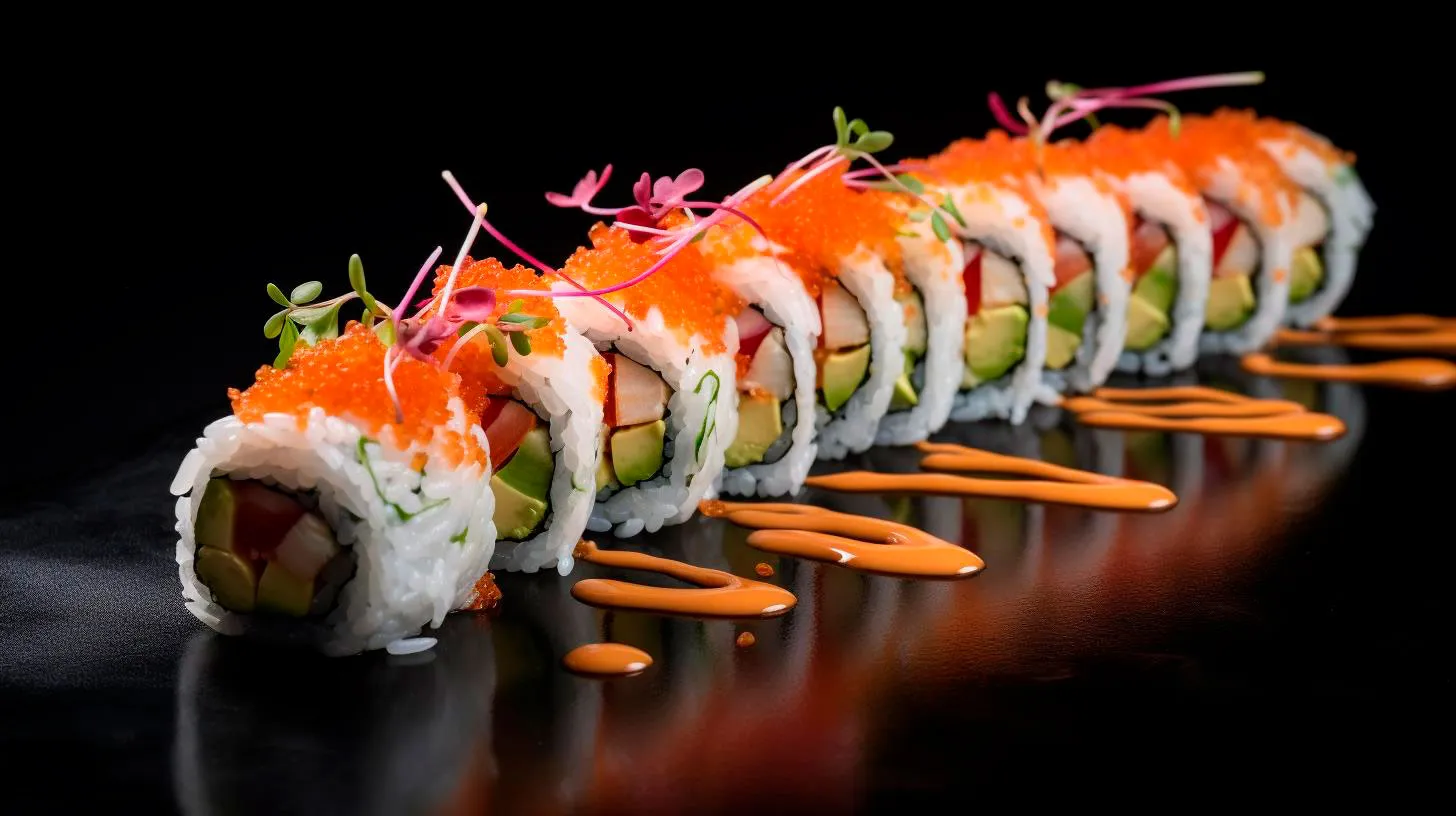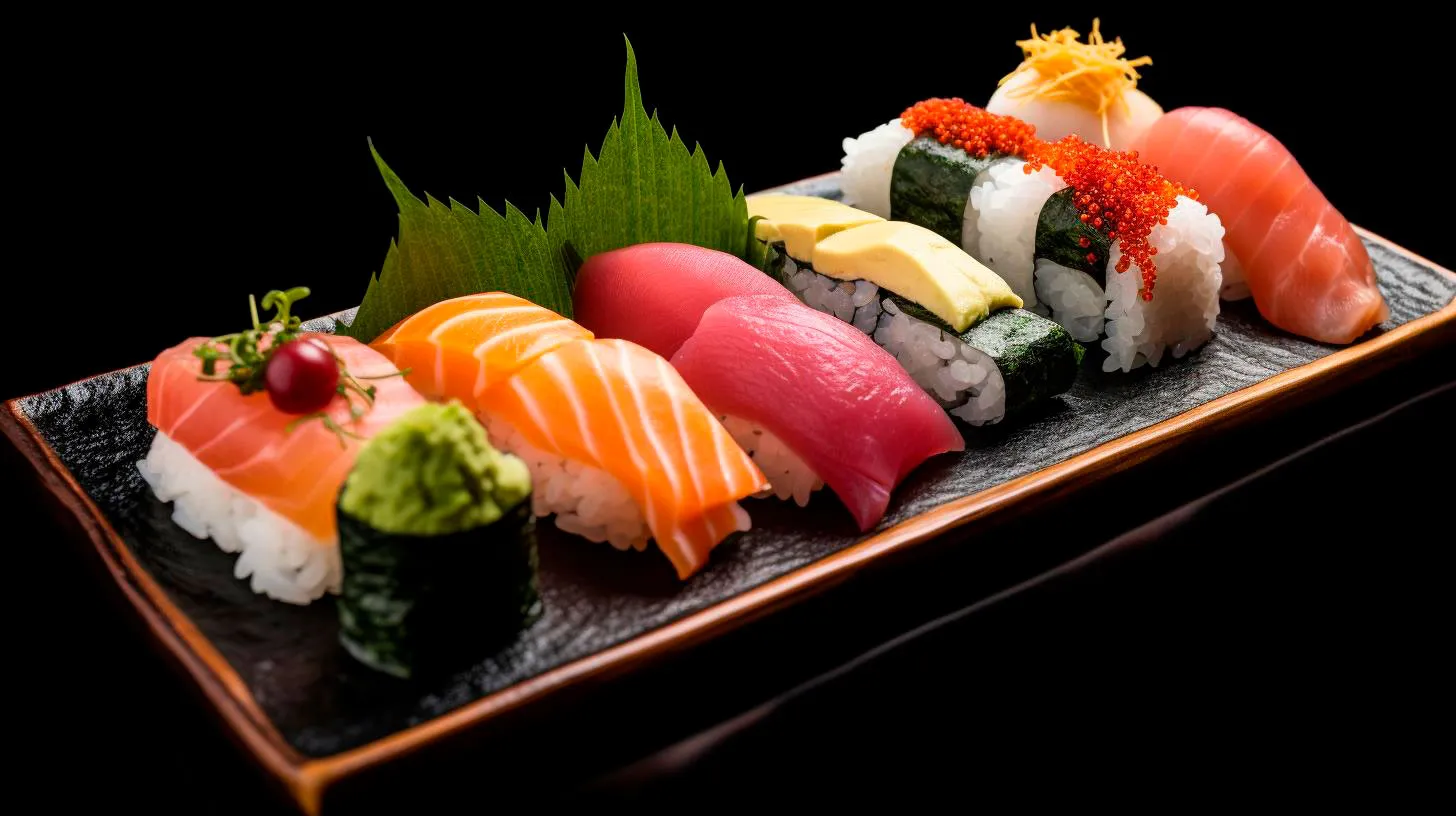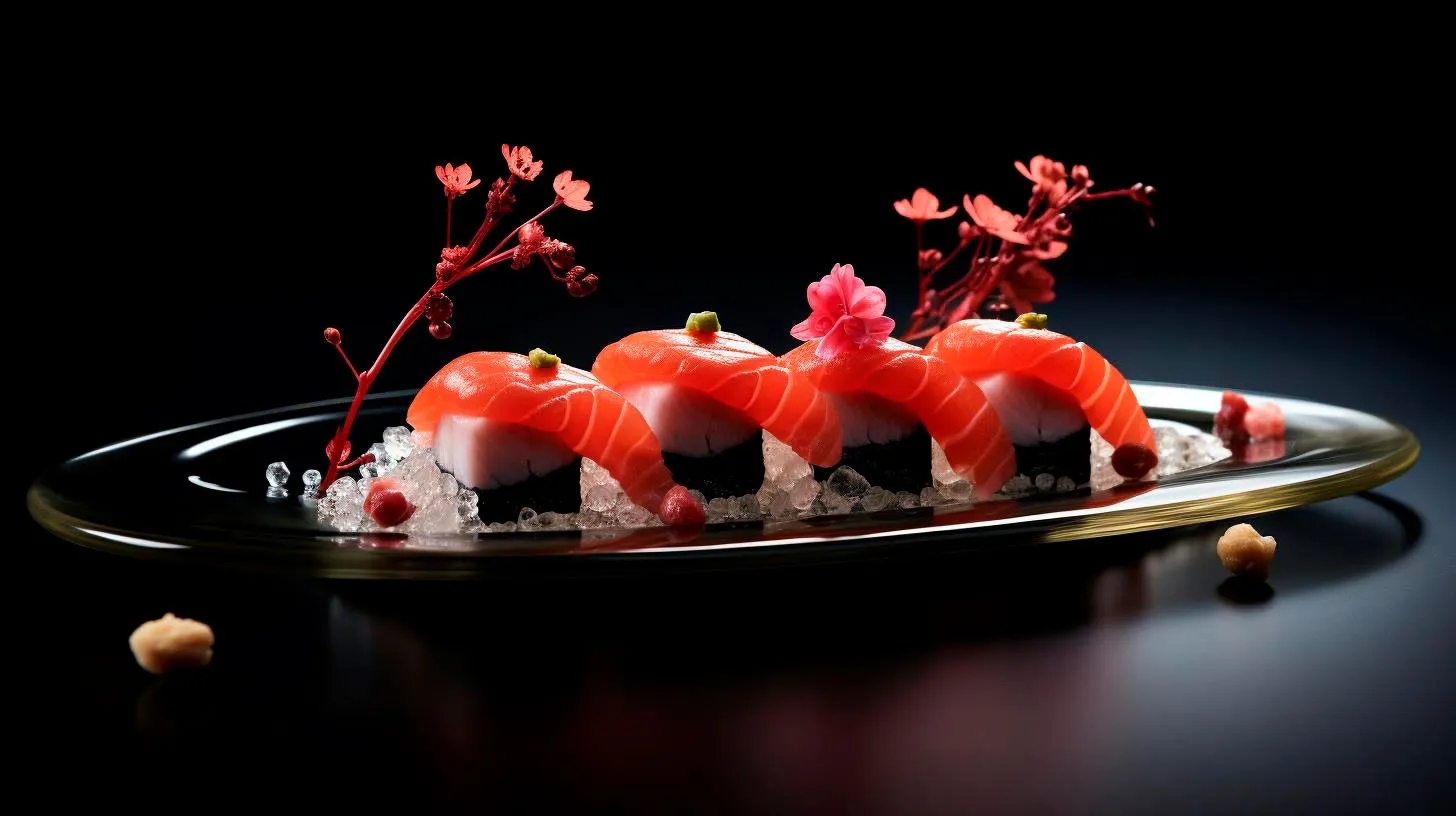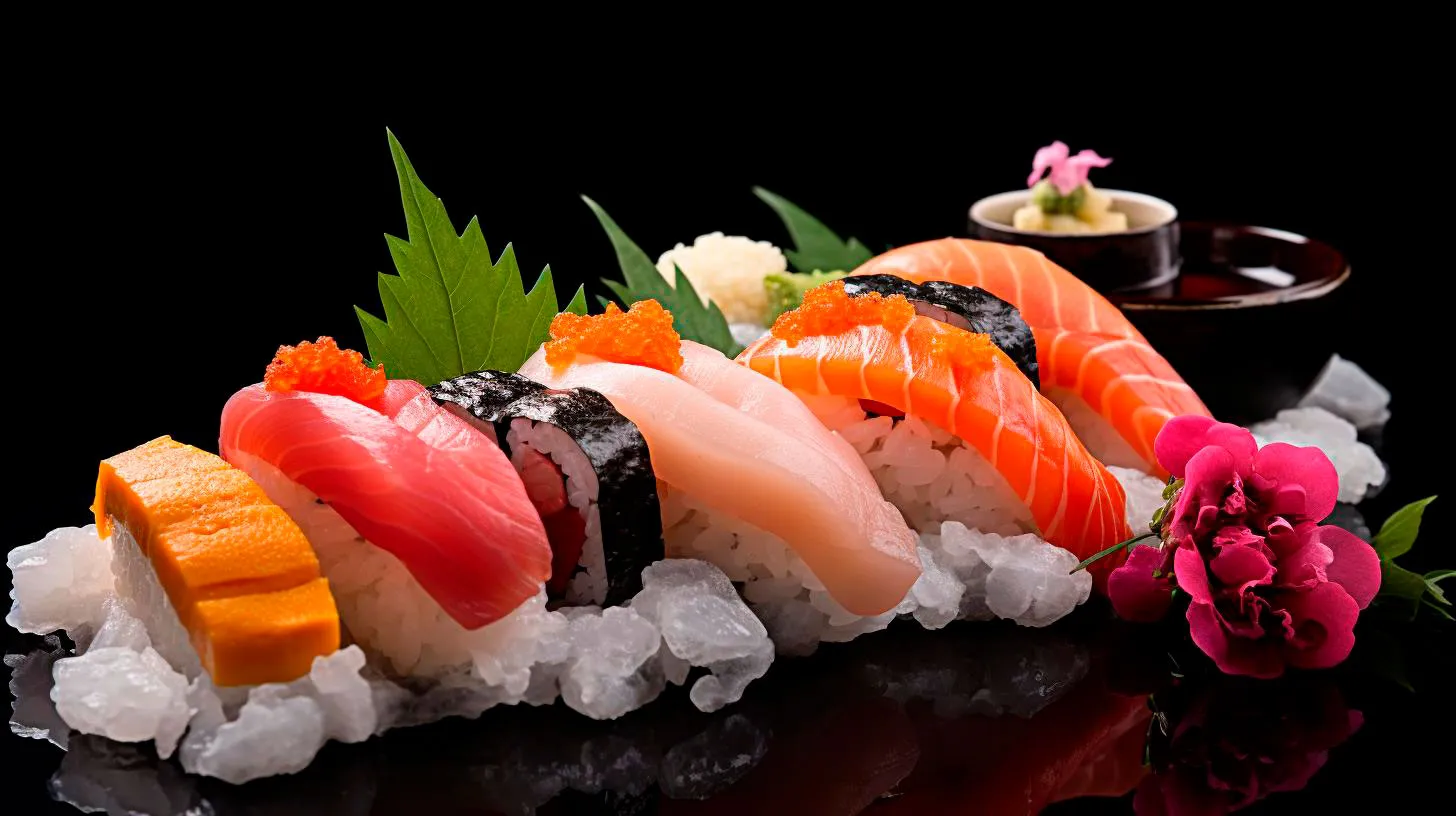Culinary Schools Pioneering the Sushi Scene Redefining the Traditional Craft
As the popularity of sushi continues to grow, culinary schools have emerged as the pioneers in redefining the traditional craft, pushing the boundaries of creativity and innovation. In this article, we delve into the exciting world of sushi and explore how culinary schools are reshaping this centuries-old tradition.
1. The Rising Demand for Sushi
In recent years, sushi has become a global phenomenon, with the demand for this exquisite delicacy skyrocketing. According to a report by Statista, the global sushi market is expected to reach a value of over $22 billion by 2025. The rise in popularity can be attributed to various factors:
- Health Benefits: Sushi is known for its healthy ingredients, such as fresh fish, nutrient-rich seaweed, and fiber-rich rice. It is low in calories and packed with omega-3 fatty acids, making it a favorite choice for health-conscious individuals.
- Globalization: With the advent of globalization, people from all corners of the world have been exposed to diverse cuisines, including sushi. Cultural exchange has led to a widespread adoption of sushi, making it more accessible than ever before.
- Visual Appeal: Sushi’s intricate presentation, vibrant colors, and visually appealing garnishes make it an Instagram-worthy dish that attracts food enthusiasts and social media influencers alike.
2. Culinary Schools Revolutionizing Sushi
As the demand for sushi grows, culinary schools have taken the lead in transforming this traditional craft into a form of culinary art. These schools are equipping aspiring chefs with the skills, knowledge, and creativity to push the boundaries of sushi-making, redefining what was once considered a traditional and rigid practice.
Benefits and Key Takeaways:
- Fusion of Cuisines: Culinary schools encourage experimentation by combining traditional Japanese techniques with flavors and ingredients from different cultures. This fusion of cuisines results in innovative sushi rolls, incorporating unique ingredients such as avocado, cream cheese, and even non-seafood proteins.
- Emphasis on Sustainability: With the growing concern for sustainability, culinary schools are training chefs to source their ingredients responsibly. They emphasize the use of sustainable seafood options, ensuring that future generations can continue to enjoy sushi without depleting marine resources.
- Artistic Presentation: Culinary schools teach aspiring chefs the importance of presenting sushi as a work of art. From intricate knife skills to mastering the art of garnishing, students are encouraged to unleash their creativity and develop their own signature style.
3. The Role of Technology in Sushi Innovation
In addition to traditional techniques, culinary schools are leveraging technology to drive innovation in the world of sushi:
- Sushi Robots: These automated machines help chefs streamline the process of rolling sushi, ensuring consistency in size and shape. Sushi robots have become a valuable tool in culinary schools, allowing students to focus on honing their flavor combinations and presentation skills.
- Virtual Reality (VR) Training: Through the use of virtual reality technology, culinary schools are providing students with immersive experiences that simulate real-world sushi preparation. This allows for risk-free experimentation and a deeper understanding of the craft.
- Online Learning Platforms: Culinary schools are leveraging online platforms to offer sushi-making courses to a global audience. Aspiring chefs can access step-by-step tutorials, interactive sessions, and even receive personalized feedback from expert instructors.
Conclusion
Culinary schools are at the forefront of the sushi revolution, pioneering the art of sushi-making and redefining this traditional craft. With their emphasis on fusion, sustainability, and artistic presentation, these schools empower aspiring chefs to push the boundaries of creativity and innovation. As sushi continues to captivate the world’s taste buds, culinary schools play a crucial role in shaping the future of this beloved dish.
From Knife Skills to Umami Mastery: How Culinary Schools Are Shaping Sushi Chefs
In this article, we will delve into how culinary schools are shaping sushi chefs, equipping them with the necessary skills to excel in this ancient culinary practice.
Before we explore the impact of culinary schools on sushi chefs, let’s take a moment to appreciate the intricacy of sushi making. Sushi is more than just raw fish and rice wrapped in seaweed – it is a precise combination of flavors, textures, and presentation. From the knife skills required to fillet the fish to the artistry involved in shaping the sushi, every step in the sushi-making process demands attention to detail.
The Role of Culinary Schools
Culinary schools play an instrumental role in shaping aspiring sushi chefs into culinary masters. Here’s how:
1. Technical Expertise
Culinary schools provide students with a strong foundation in traditional Japanese cooking techniques, focusing on knife skills, fish handling, and rice preparation. Mastering these skills is essential for sushi chefs as they form the building blocks of creating delectable sushi rolls.
2. Art of Presentation
Sushi is not just about taste – it is a visual feast as well. Culinary schools teach students the art of presentation, ensuring that their sushi creations are not only delicious but also visually appealing. Through meticulous training, aspiring sushi chefs learn how to create stunning platings that are worthy of admiration.
3. Learning the Umami Secrets
One of the keys to exceptional sushi lies in understanding and utilizing umami – the fifth taste. Umami refers to a savory, rich flavor that enhances the overall taste of sushi. Culinary schools give aspiring sushi chefs the knowledge and techniques to master umami, allowing them to create sushi that tantalizes the taste buds of their customers.
4. Menu Development and Innovation
Culinary schools foster creativity and encourage sushi chefs to experiment with flavors and ingredients. Through menu development classes, aspiring chefs can explore new sushi combinations and innovative techniques, keeping sushi fresh and exciting in an ever-evolving culinary landscape.
The Advantages of Culinary Education
An education from a reputable culinary school offers numerous advantages for aspiring sushi chefs:
- Guidance from Experienced Chefs: Culinary schools have a faculty comprising experienced chefs who guide and mentor students, providing invaluable insights into the world of sushi.
- Networking Opportunities: Culinary schools often organize industry events and invite renowned chefs as guest speakers. This exposure allows aspiring sushi chefs to build connections and learn from the best in the business.
- Access to Specialized Equipment: Culinary schools provide students with access to state-of-the-art equipment, including traditional sushi knives and specialized sushi-making tools that are essential for perfecting their craft.
- Industry Internships: Many culinary schools have partnerships with leading sushi restaurants, offering students the opportunity to intern and gain real-world experience in professional kitchens.
Key Takeaways
Culinary schools play a crucial role in shaping sushi chefs, equipping them with the necessary skills and knowledge to create extraordinary sushi. Here are the key takeaways from this article:
- Sushi is an art form that demands skill, precision, and creativity.
- Culinary schools provide aspiring sushi chefs with technical expertise, teaching them essential knife skills and fish handling techniques.
- The art of presentation is a significant emphasis in culinary schools, ensuring that sushi is not only delicious but also visually appealing.
- Understanding and utilizing umami is essential for creating exceptional sushi.
- Culinary education offers advantages such as guidance from experienced chefs, networking opportunities, access to specialized equipment, and industry internships.
By enrolling in culinary schools, aspiring sushi chefs can embark on a journey to hone their skills, ignite their creativity, and contribute to the ever-evolving world of sushi.
The Evolution of Sushi: Honoring Tradition with an Artistic Renaissance
The Origins of Sushi
Sushi, as we know it today, traces its roots back to ancient Japan. However, the earliest form of sushi can be traced even further back to Southeast Asia, where fish was fermented and preserved with rice and salt as a means of preservation.
It was during the Muromachi period in Japan that sushi started transforming into its modern form. A preservation technique known as narezushi was introduced, where fish was cured with rice vinegar instead of salt. This development allowed the fish to be consumed after a shorter fermentation period, resulting in a more palatable dish.
The Rise of Edo-Mae Sushi
During the Edo period, which spanned from the 17th to 19th centuries, sushi took on a whole new identity. In Edo (modern-day Tokyo), the city’s burgeoning population led to an increased demand for quick, affordable, and delicious meals.
It was during this time that Edo-Mae Sushi emerged, named after the city itself. The sushi chefs of Edo perfected the art of combining vinegar-seasoned rice with fresh fish, creating bite-sized morsels that were both flavorful and visually appealing.
Key Takeaway: Edo-Mae Sushi paved the way for the sushi rolls we commonly enjoy today.
Sushi Goes Global
The late 19th century marked a turning point for sushi, as Japan began to open up to the Western world. In 1885, the first sushi restaurant outside of Japan opened in the United States, signaling the beginning of sushi’s global journey.
Over the years, sushi gained popularity across the globe. However, as it traveled far from its origins, sushi began to adapt to local tastes and ingredients. New styles such as California rolls, which incorporate avocado and crab instead of raw fish, emerged to cater to the evolving preferences of Western diners.
Key Takeaway: Sushi’s globalization led to the creation of fusion rolls, offering a diverse range of flavors and ingredients.
The Artistic Renaissance of Sushi
While sushi has always been visually appealing, the 21st century witnessed an artistic renaissance within the sushi world. Sushi chefs, known as Itamae, began pushing the boundaries of creativity and presentation.
Today, sushi is not only a culinary delight for the taste buds but also a feast for the eyes. Chefs meticulously craft each sushi roll, arranging the ingredients in intricate patterns and using vibrant hues to create mesmerizing works of art on the plate.
Key Takeaway: Sushi has evolved into an art form, showcasing the skills and creativity of talented sushi chefs.
Advancements in Sushi Technology
As sushi gained popularity worldwide, advancements in technology played a crucial role in making it more accessible. Conveyor belt sushi, also known as Kaiten-zushi, revolutionized the sushi dining experience.
With Kaiten-zushi, sushi rolls are placed on a rotating conveyor belt, allowing customers to select their favorite dishes as they pass by. This innovation not only made sushi more affordable but also significantly reduced waiting times, making it a more convenient option for diners.
Key Takeaway: Conveyor belt sushi has made sushi dining a faster, more cost-effective experience.
The Future of Sushi
As we look towards the future, sushi continues to evolve and excite people’s taste buds. With a growing emphasis on sustainability, sushi chefs are exploring alternative ingredients and techniques that reduce the environmental impact of traditional fish-based sushi.
Moreover, advancements in technology may introduce automated sushi preparation machines, helping meet the demand for sushi quickly and efficiently.
Key Takeaway: The future of sushi lies in sustainability and technological advancements.
In conclusion, sushi has come a long way from its humble beginnings as a preservation technique. From the introduction of Edo-Mae sushi to its global popularity and artistic renaissance, sushi has captured the hearts and taste buds of people around the world. With its ongoing evolution and commitment to tradition, sushi remains a truly iconic cuisine.
Exploring the Fusion of Art and Cuisine: Sushi as an Expression of Creativity
In this article, we will delve into the marvelous world of sushi and uncover how the art of sushi-making is a creative expression in itself.
The Artistry Behind Sushi Making
Sushi-making is a meticulous craft that requires years of practice to master. It is not just about combining ingredients; it involves a delicate balance of colors, shapes, and textures to create edible masterpieces that are pleasing to the eye as well as the palate. Let’s dive into the artistic elements that make sushi an extraordinary work of art:
1. Presentation
The way sushi is presented is a crucial aspect of its artistry. Skilled sushi chefs arrange the ingredients with precision and care, creating visually stunning displays. Each sushi roll is meticulously shaped and cut, ensuring that it appears as a work of art on the plate.
- Use of vibrant colors: Sushi is known for its vibrant and contrasting hues, making it visually appealing.
- Attention to details: Every garnish and ingredient is intentionally placed with attention to detail, creating a harmonious visual composition.
- Plating techniques: Chefs use various plating techniques to enhance the visual appeal, such as arranging sushi rolls in intricate patterns or using decorative sauces.
2. Ingredients as Brushes
Sushi chefs treat their ingredients as brushes and the plate as their canvas. They carefully select fresh and top-quality ingredients to create a symphony of flavors, textures, and colors. With these ingredients, they craft unique sushi creations that captivate both the eyes and the taste buds.
- Seamless combinations: The blending of ingredients like fish, vegetables, and rice is done in such a way that they complement each other perfectly.
- Texture play: Different textures, such as the crunch of tempura or the creaminess of avocado, are introduced to create an intriguing dining experience.
- Harmonious flavors: The art of sushi lies in achieving the right balance of flavors, ensuring that no single taste overpowers the others.
3. Creative Variations
One of the reasons sushi remains popular is its ability to constantly evolve through innovative creations. Sushi chefs worldwide experiment with unique ingredients and techniques, pushing the boundaries of traditional sushi-making.
- Fusion sushi: The fusion of different culinary traditions has given rise to sushi variations like the California roll or the spicy tuna roll, introducing new flavors and ingredients to traditional sushi.
- Sushi art collaborations: Some sushi chefs collaborate with artists to create edible works of art, incorporating unconventional elements such as edible gold leaf or vibrant edible ink.
The Key Takeaway: A Creative Culinary Experience
Sushi is much more than just a meal; it is a creative expression that delights both the eyes and the taste buds. Its artistry lies in the presentation, selection of ingredients, and continuous innovation. Here are the key takeaways to remember when exploring the fusion of art and sushi:
- Sushi is a visual delight with its vibrant colors and meticulous presentation techniques.
- Ingredients are skillfully combined, creating a harmonious balance of flavors and textures.
- Constant innovation in sushi-making introduces unique variations, blending various culinary influences.
As sushi continues to evolve, both traditional and modern techniques contribute to its ever-growing popularity. The culinary artists behind these edible masterpieces constantly challenge the boundaries of creativity. So, the next time you indulge in a sushi experience, take a moment to appreciate the fusion of art and cuisine that goes into each and every roll.



